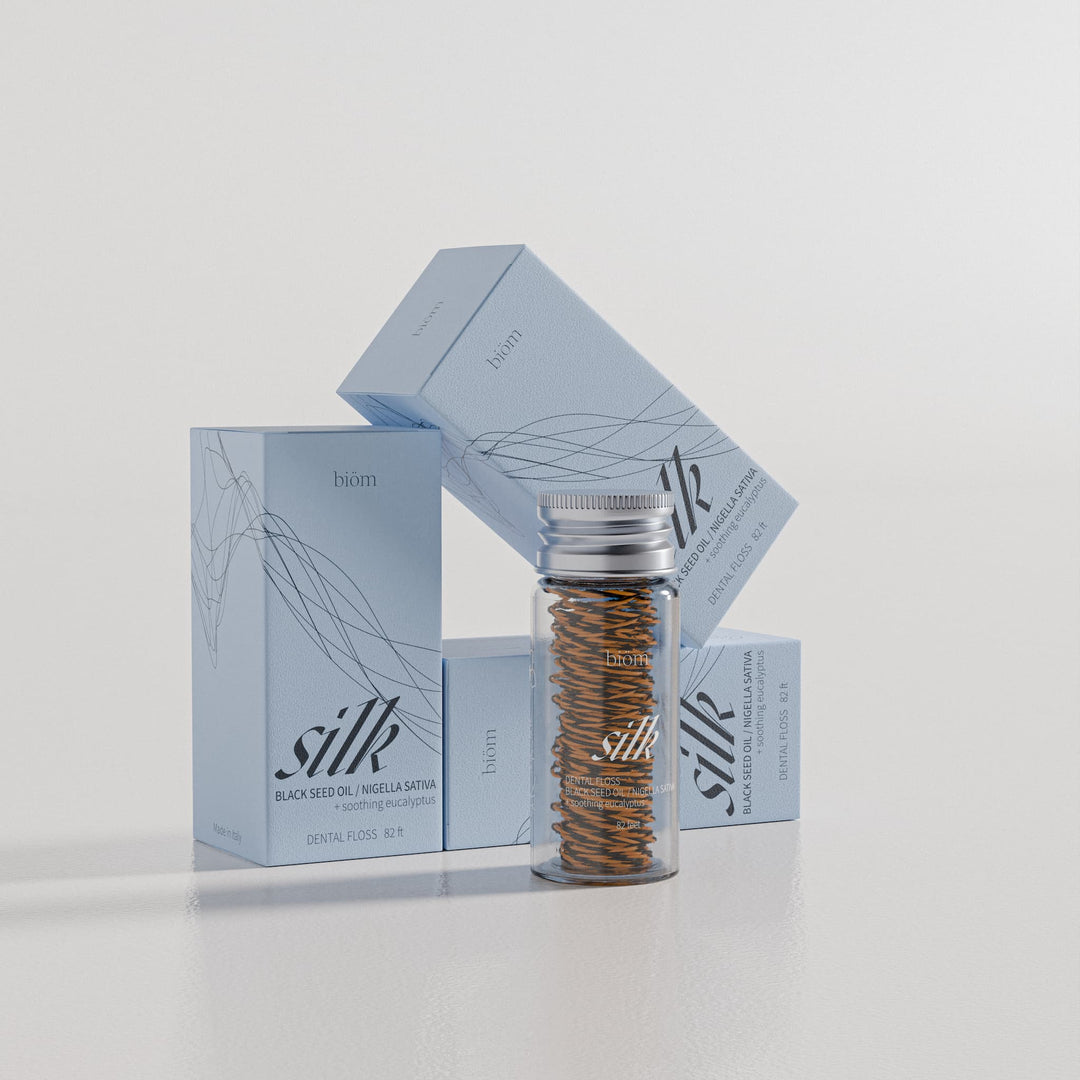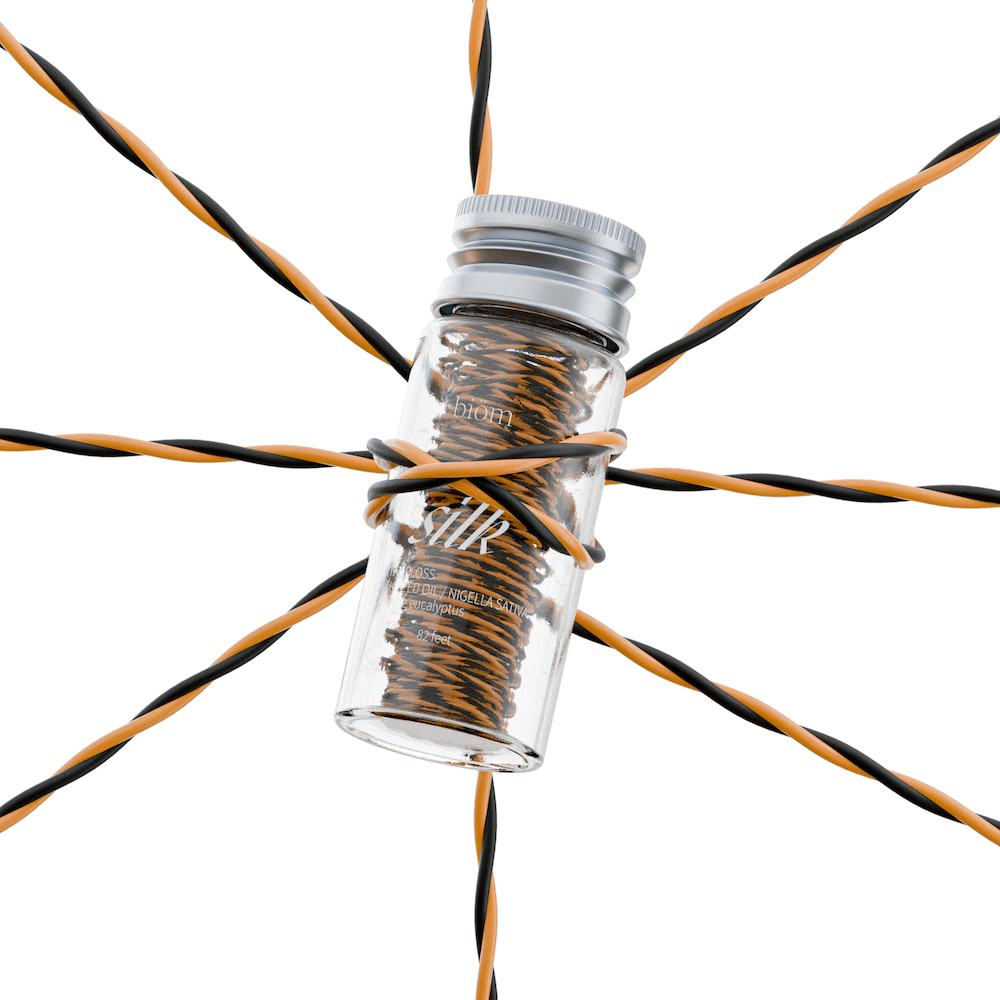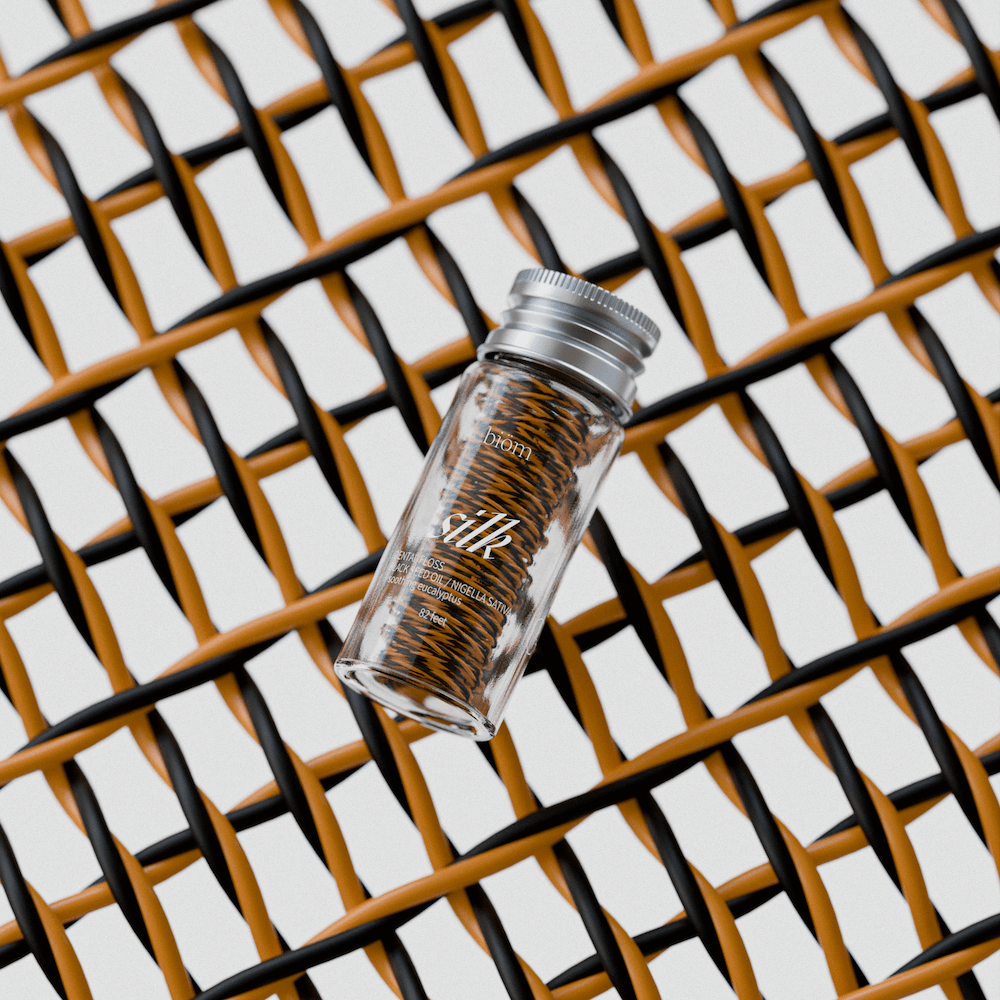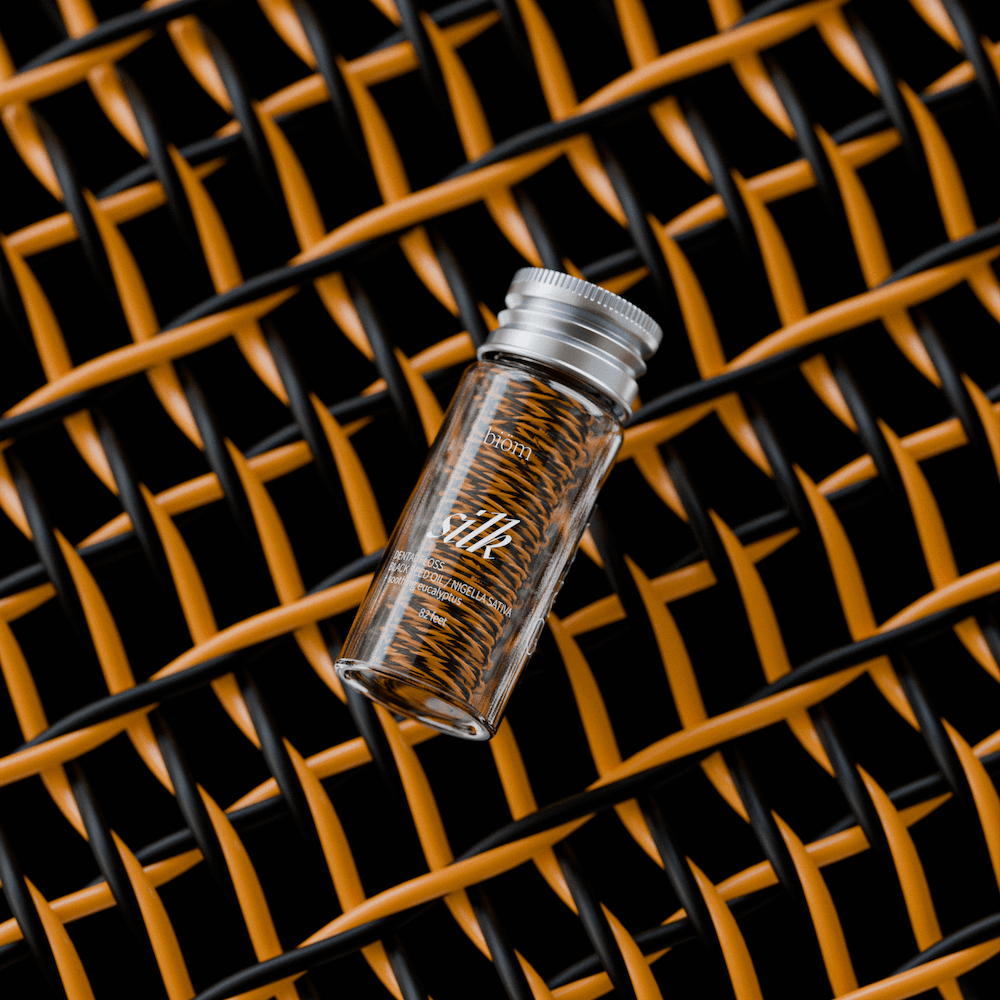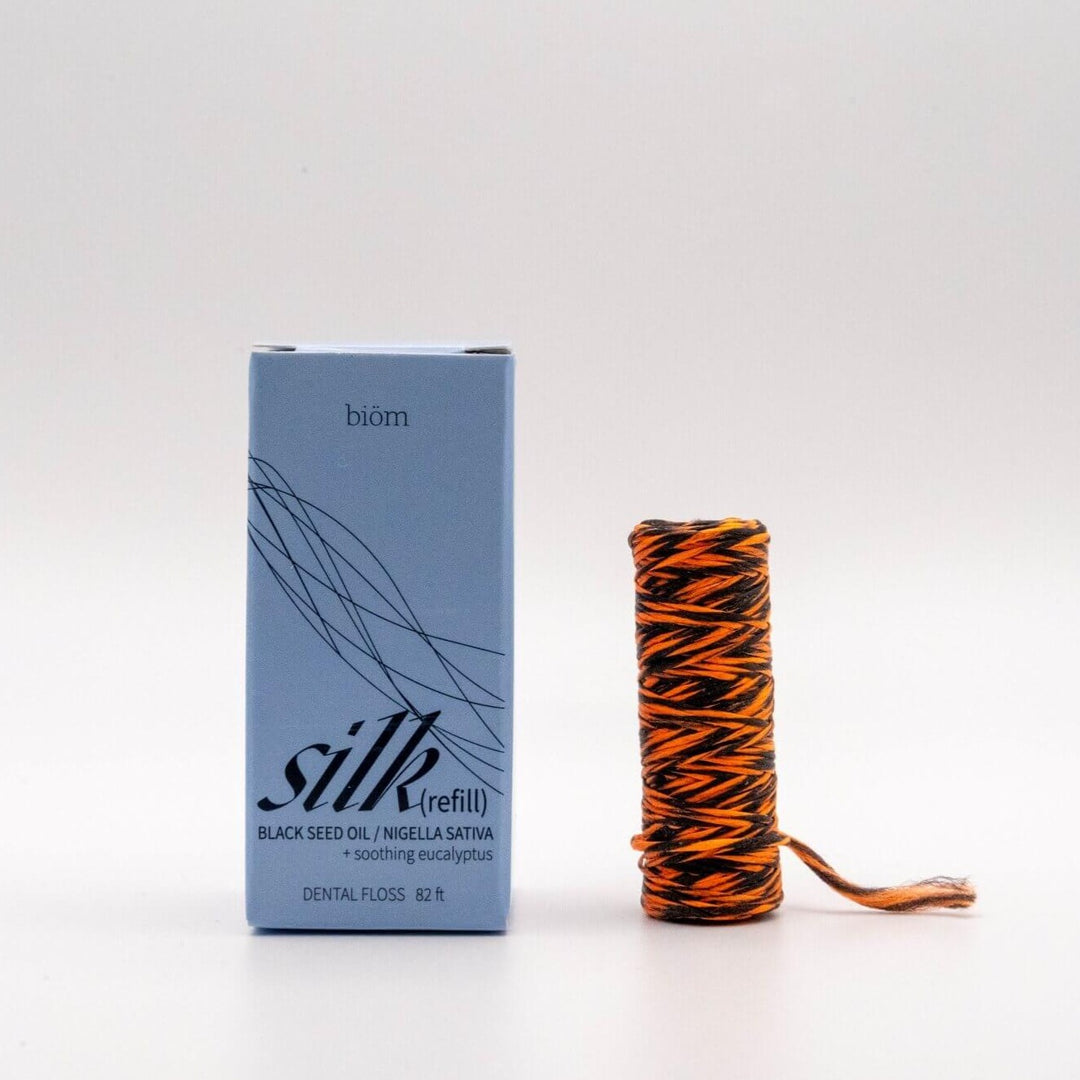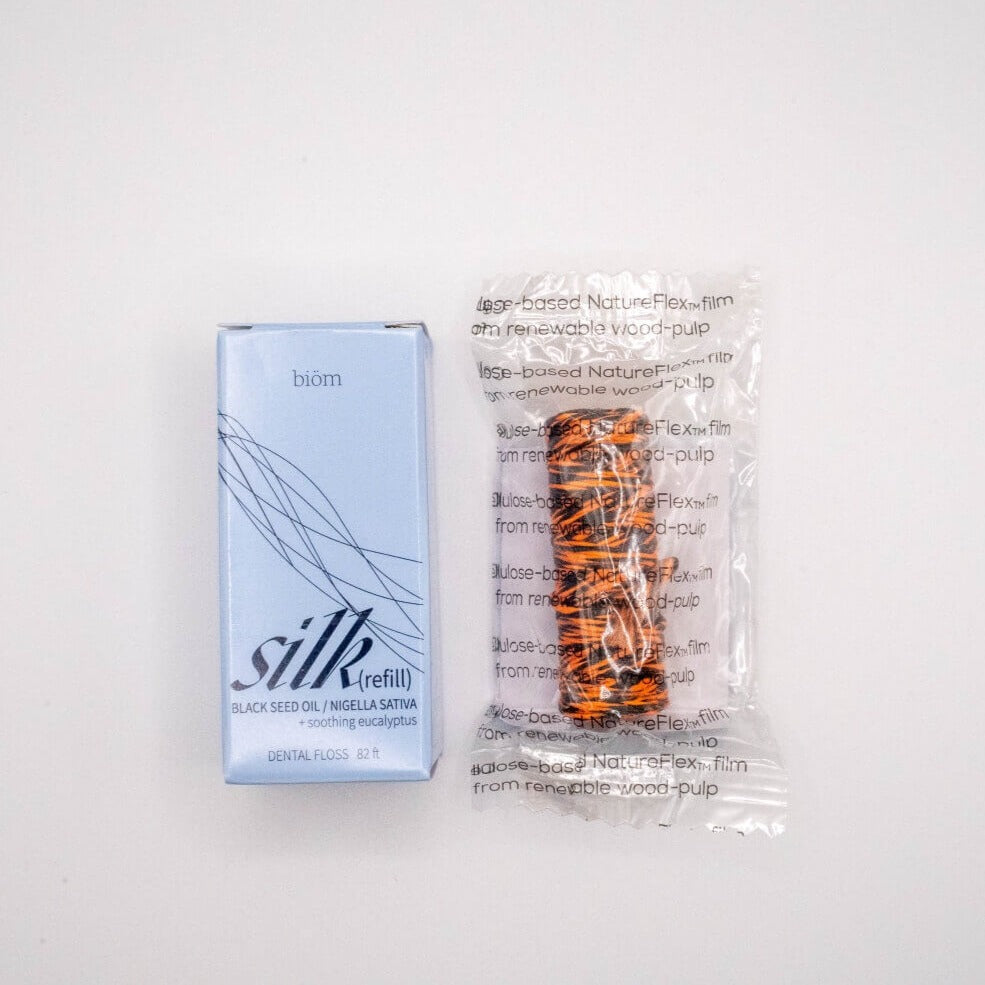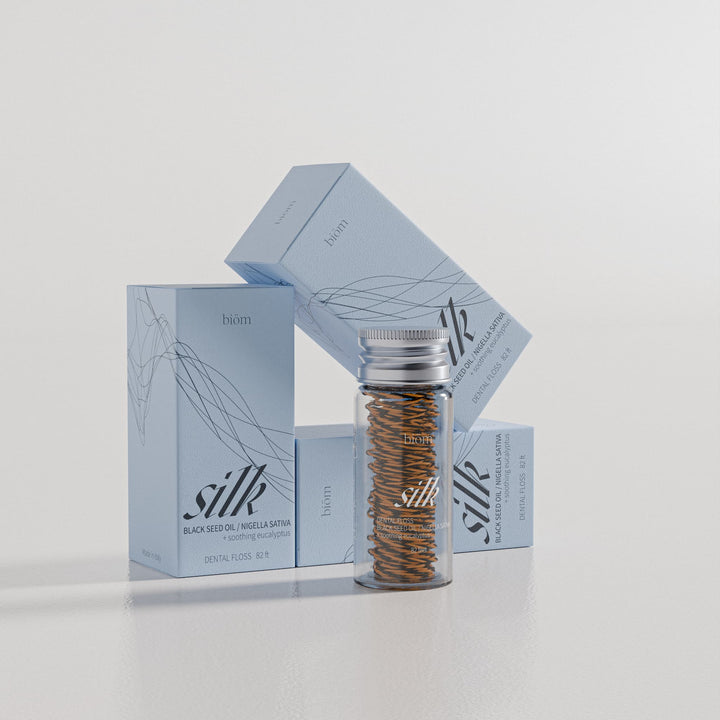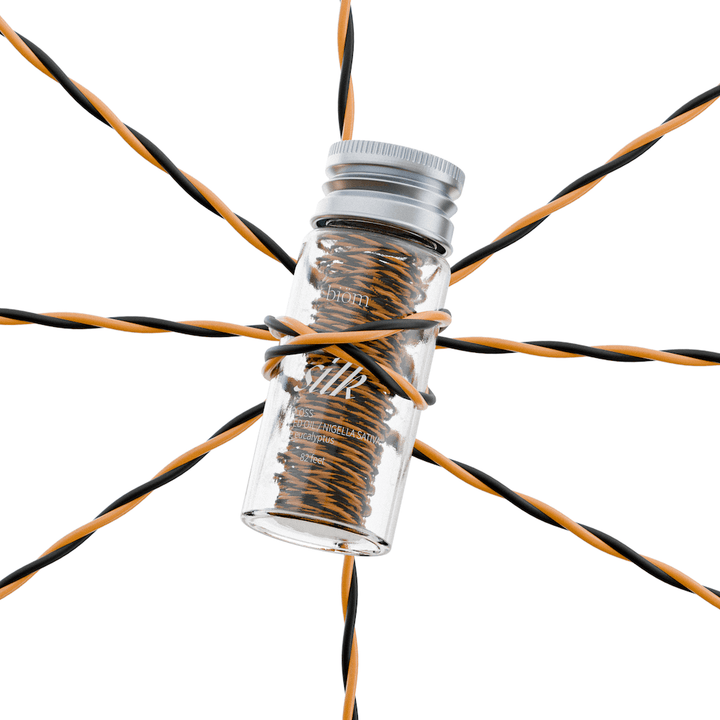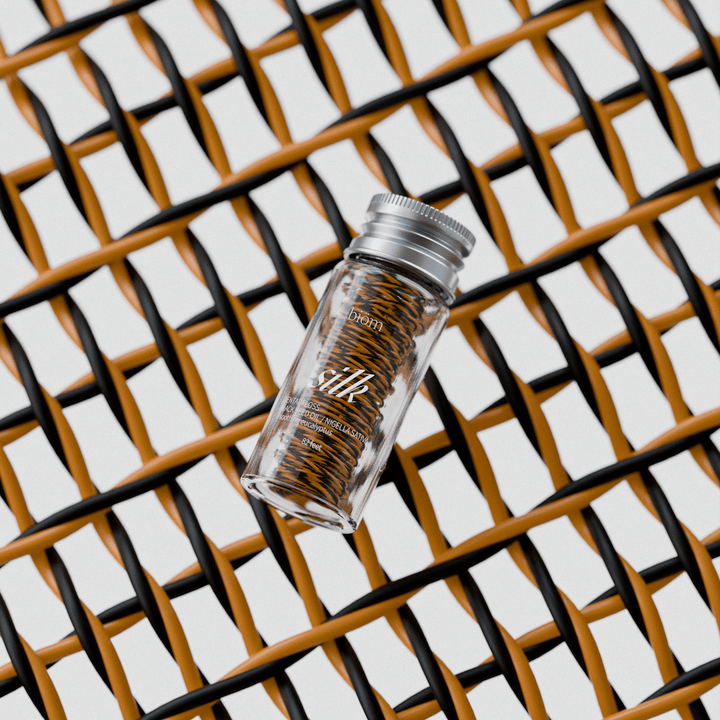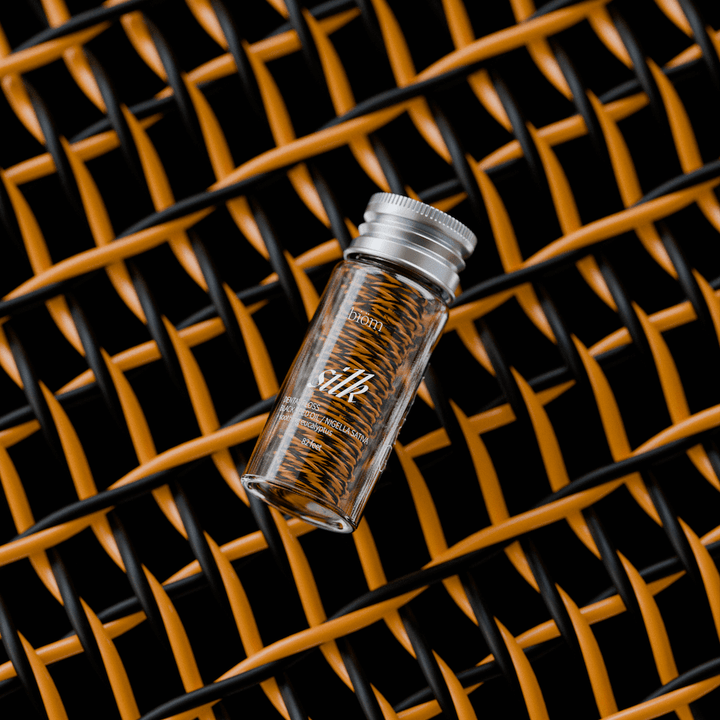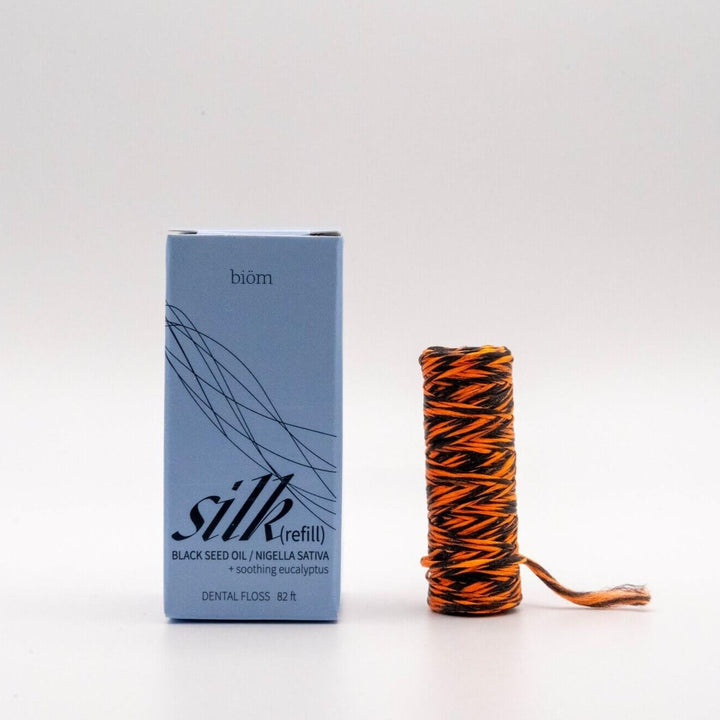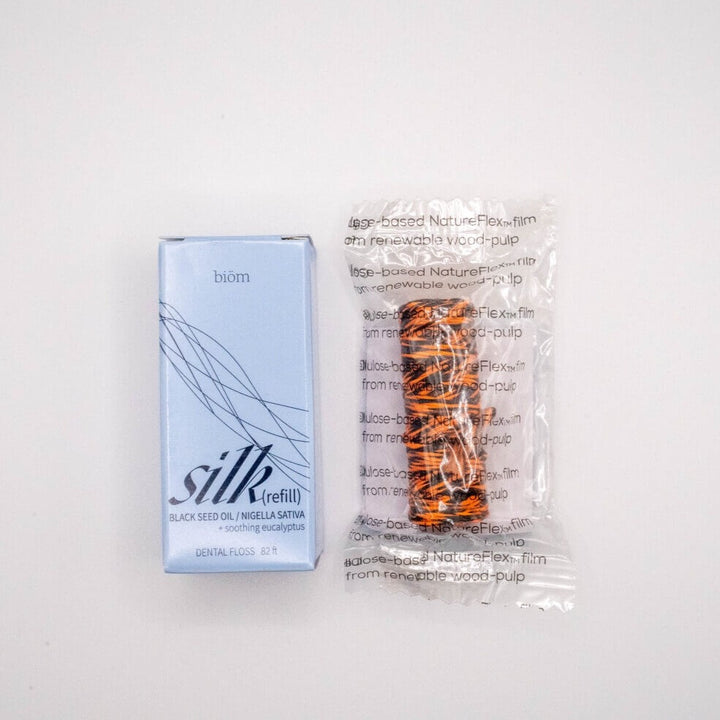How to Floss Teeth Properly
Flossing is an essential part of maintaining good oral hygiene, yet many people may not be entirely sure of the proper technique.
Proper flossing not only removes plaque and debris from between the teeth and along the gum line but also plays a crucial role in preventing cavities and gum disease.
For optimal oral hygiene, incorporating dental floss into your daily routine is essential. Before brushing your teeth, follow these simple steps for effective flossing:
-
Cut an 18-inch piece of dental floss, wind it around your fingers, and leave a few inches to work with.
-
Gently slide the floss between teeth, moving it back and forth to remove plaque and debris.
-
Curve the floss around each tooth in a C shape to reach tight spaces and remove hidden plaque.
-
Roll used floss around one finger and unwind a fresh section as you move between teeth, ensuring each tooth is cleaned with a fresh section.
Taking care of your smile involves more than just brushing—it’s about using dental floss properly and effectively too!
Considering how often we use our mouths throughout the day—for eating, drinking, and speaking—it’s crucial to prioritize our oral health.
Keep reading to explore everything you need to know about dental floss and how to use it effectively.
What is dental floss used for?

As brushing cannot reach all sides of our teeth, dental floss is designed to effectively clean the hard-to-reach areas between our teeth and along the gum line.
It is a thin, flexible strand of material which commonly made out of nylon, polyester or teflon and comes in various forms, such as waxed floss, unwaxed, flavored, unflavored, and regular floss, to cater to different preferences and needs.
There are also some types of floss available like dental tape, which can be more comfortable for people with wider spaces between their teeth.
Additionally, some dental floss products are designed for use with braces, bridges, and implants, making them versatile tools for a wide range of dental care needs.
Regular flossing, combined with proper brushing with nano hydroxyapatite toothpaste, tongue scraping, and mouthwash can contribute significantly to a healthy mouth and a bright smile.
Why use dental floss?
Dental floss is an essential tool for maintaining oral hygiene because it reaches areas between the teeth and along the gumline that brushing alone cannot access.
In fact, the American Dental Association (ADA) states that using dental floss regularly can effectively help remove debris and dental plaque, reducing the risk of gum disease and tooth decay.
Additionally, flossing helps to prevent the buildup of tartar, which can only be removed by a dental professional.
Overall, incorporating dental floss into your oral care routine is vital for achieving and maintaining optimal dental health.
What type of floss should I use?
For superior interdental cleaning, expandable dental floss stands out as the optimal choice.
Its unique expandable feature ensures thorough cleaning by expanding upon contact with saliva, reaching even the tightest spaces for a deep clean that leaves your mouth feeling refreshed.
The high-quality textured threads not only remove stubborn debris but also actively combat periodontal disease, promoting overall gum health.
For instance, SILK Expandable dental floss offers several advantages over traditional floss. It is infused with antimicrobial properties from nigella sativa, harnessing the power of thymoquinone to enhance gum health.
Additionally, the natural eucalyptus aroma adds a refreshing touch to your interdental cleaning routine, making it both pleasant and effective.
Therefore, using expandable dental floss into your oral hygiene routine can contribute to cleaner teeth, healthier gums, and a brighter smile.
How to Use Dental Floss with Proper Flossing Technique.

For effective interdental cleaning and optimal oral hygiene, follow these steps using expandable dental floss:
-
Cut and Wrap: Begin by cutting a piece of expandable dental floss, ensuring it’s about 18 inches long. Wind the majority of the floss around your middle finger or index fingers, leaving a small section between them for easy maneuverability.
-
Glide and Expand: Gently glide the expandable floss between your teeth using a back-and-forth motion. As it comes into contact with saliva, it will naturally expand, effectively cleaning even the tightest spaces.
-
Curve and Clean: Curve the floss into a C shape around each tooth, ensuring it reaches beneath the gumline without injuring the gum tissue. Clean both sides by moving the floss up and down, focusing on removing plaque from the tooth surfaces and under the gumline.
-
Roll and Refresh: After cleaning each tooth, roll the used portion of the floss around your one finger while unwinding a fresh section from the other finger. This ensures you use a clean section of floss for each tooth, preventing the spread of bacteria.
Just make sure you don't reuse any type of dental floss to avoid spreading bacteria and potentially causing infections. -
Replenish and Receive: Once you’ve flossed between all your teeth, replenish your mouth with water to rinse away loosened plaque and debris. For additional freshness and germ-killing benefits, consider using an antiseptic mouthwash.
-
Enjoy: Revel in the sensation of a clean and healthy mouth. By incorporating proper flossing with expandable dental floss into your daily routine, you can enjoy the benefits of reduced plaque, decreased risk of cavities and gum disease, and a brighter smile.\
Keep up with your flossing routine, and your smile will thank you!
If you have any questions or concerns about flossing or oral care, don’t hesitate to consult your dentist or dental hygienist.
How often should I use floss?
You should floss at least once a day to effectively remove plaque and food particles from between your teeth and under the gumline, areas where your toothbrush cannot reach.
Daily flossing is essential for preventing tooth decay, gum disease (such as gingivitis), and halitosis (bad breath). By removing plaque buildup, you minimize the risk of it hardening into tartar, a substance that can only be removed by a dental professional and can lead to periodontitis if left untreated.
Flossing once a day helps maintain the health of your teeth and gums by disrupting and removing the colonies of bacteria and food particles that contribute to dental problems.
The best time to floss is before you brush your teeth at night, as this ensures that any dislodged food particles and plaque are brushed away afterward.
However, the most important aspect is that you floss regularly, regardless of the time of day. Consistency is key to reaping the benefits of flossing.
Should I floss before brushing?
Yes, we recommend flossing before brushing your teeth. Flossing first helps loosen plaque and debris between the teeth and along the gumline, making it easier for your toothbrush to remove them during brushing.
By flossing before brushing, you ensure that your toothbrush can effectively clean all surfaces of your teeth, resulting in a more thorough oral hygiene routine.
Additionally, flossing first allows fluoride or nano hydroxyapatite from your toothpaste to better penetrate between your teeth, enhancing its effectiveness in fighting tooth decay and strengthening enamel.
So, remember to floss before brushing to maximize the benefits of both activities and maintain optimal oral health.
Is mouthwash better than flossing?

No, mouthwash is not better than flossing. While both mouthwash and flossing play important roles in oral hygiene, they serve different purposes and cannot replace flossing.
Flossing is crucial for removing plaque and food particles from between teeth and along the gum line, areas that a toothbrush cannot effectively reach. It helps prevent cavities, gum disease, and bad breath by removing food particles and bacteria that can contribute to these issues.
On the other hand, mouthwash can be a beneficial addition to your oral hygiene routine, but it is not a substitute for flossing.
It can help freshen breath, reduce bacteria in the mouth, and provide additional fluoride or other beneficial ingredients to help protect teeth. However, it cannot physically remove plaque and food particles from between the teeth like flossing can.
All in all, both flossing and using mouthwash are important components of a comprehensive oral hygiene routine. Flossing should be prioritized for its ability to physically remove debris from between the teeth, while mouthwash can be used as a supplementary step to provide additional oral health benefits.
Frequently Asked Questions
What is the correct way to floss your teeth?
The correct way to floss your teeth involves several steps. First, pick up your expandable dental floss then start with a piece of floss about 18 inches long. Wind most of it around your middle fingers, leaving a few inches of floss between them. Gently slide the floss between your teeth using a back-and-forth motion, curving it around the base of each tooth in a C shape and carefully sliding it beneath the gumline. Clean both sides of each tooth by moving the floss up and down against the tooth surface. Finish by rinsing your mouth with water to remove loosened plaque and debris.
What is the healthiest way to floss your teeth?
The healthiest way to floss your teeth involves several key steps. Firstly, use an appropriate type of dental floss, such as expandable, to ensure thorough cleaning and minimize irritation. Next, floss gently but effectively, avoiding snapping the floss into your gums, which can cause irritation or damage. Ensure you clean both sides of each tooth and reach beneath the gumline to remove plaque and debris. Proper flossing is crucial in preventing tooth decay and gum disease by removing plaque build-up that can lead to these conditions. Finally, maintain consistency by flossing at least once a day as part of your oral hygiene routine, complementing it with regular brushing and dental check-ups for optimal dental health.
Is it better to floss after or before brushing your teeth?
We recommend to floss before brushing your teeth. Flossing first helps loosen plaque and debris between the teeth and along the gumline, making it easier for your toothbrush to remove them during brushing. By flossing before brushing, you ensure that your toothbrush can effectively clean all surfaces of your teeth, resulting in a more thorough oral hygiene routine. Additionally, flossing first allows fluoride from your toothpaste to better penetrate between your teeth, enhancing its effectiveness in preventing cavities and strengthening enamel. So, remember to floss before brushing to maximize the benefits of both activities and maintain optimal oral health.
How long should you floss between each tooth?
Ideally, you should spend about 1-2 minutes flossing between each tooth. This allows enough time to thoroughly clean the surfaces and remove plaque and debris. Remember to be gentle but thorough, ensuring you clean both sides of each tooth and reach beneath the gumline. If you’re new to flossing or have sensitive gums, you may need to start with shorter intervals and gradually increase the time as you become more comfortable with the process. Consistency is key, so aim to floss at least once a day to maintain optimal oral health.
Is flossing once a day enough?
Flossing once a day is generally sufficient to maintain good oral hygiene. It helps remove plaque and debris from between teeth and along the gumline, areas that a toothbrush cannot effectively reach. However, some individuals may benefit from flossing more frequently, especially if they have certain risk factors for dental issues like cavities or gum disease. Ultimately, the most important factor is consistency. Whether you choose to floss once or more times a day, sticking to a regular flossing routine, along with regular brushing is key to preventing plaque buildup and promoting overall dental health.
Will floss plug the drain?
Yes, dental floss can potentially plug the drain if flushed down. Floss doesn't break down easily and can tangle with other debris, leading to clogs in pipes and drains. To avoid plumbing problems, it's important to dispose of floss in the trash instead of flushing it. brushing and regular dental check-ups, is key to achieving and maintaining optimal oral health.
Can you take dental floss on a plane?
Yes, you can take dental floss on a plane in both carry-on and checked baggage. It is considered a personal hygiene item and poses no security risk. However, be mindful of sharp dental tools as they may not be allowed in carry-on bags.


